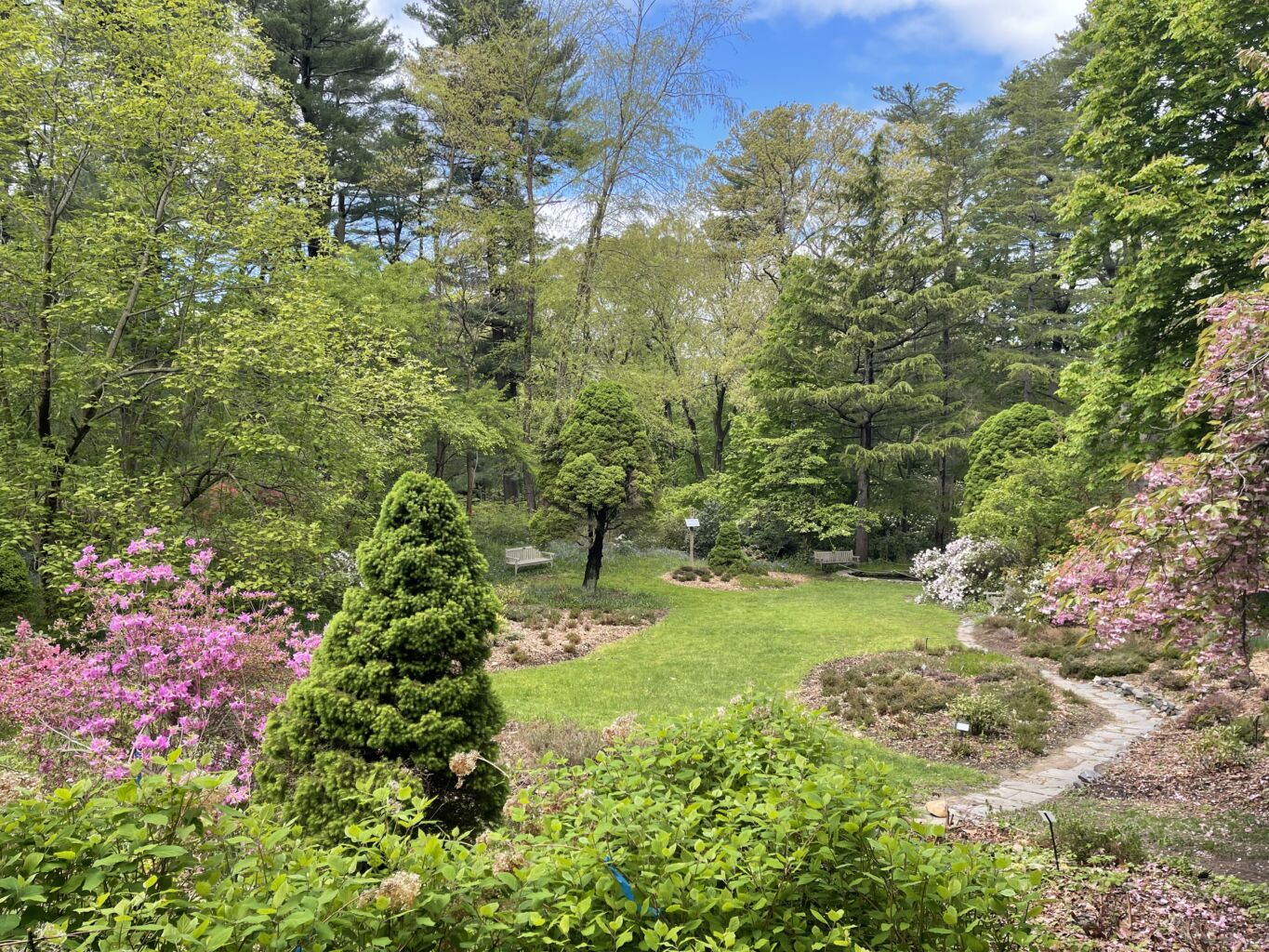The Heather Garden at Planting Fields, designed by the Olmsted Brothers, is aptly named after the heather plant – an evergreen, low-maintenance plant with pink and violet blooms that grow in sunny spots as well as in partial shade. Whatever the season, heath and heather plants add a pop of color to any garden.1 Completed in 1927, the Heather Garden sits northwest of Coe Hall near Planting Fields Road. Inspiration for the Heather Garden may have come from W. R. Coe’s homeland, England. He frequently traveled to the UK and may have been influenced by the country’s moorland. English moorland typically features swaths of grasses, shrubs and seasonal wildflowers that cover open, rolling hills. 2 These areas are generally used for hill farming, with extensive areas also managed for game shooting. 3 At Planting Fields in the 1920s, the Heather Garden acted as a secret garden, its perimeter plantings of evergreen and flowering trees enclosed a hidden haven within. Entering the garden felt like stepping into a curated garden room. Guests were greeted with masses of heather that extended over a curved flagstone path. The path led down the garden to a small pool with a quaint bench at its side. Wisteria, mounds of evergreen shrubs and flowering dogwood trees permeated the remaining area. There is no clear impetus as to why the Heather Garden was created at Planting Fields, but the resemblance to English moorland is evident in the photo above taken by Mattie Edwards Hewitt c. 1925.
The Heather Garden began deteriorating after William R. Coe donated Planting Fields to New York State in 1948. Alternating planting beds caused difficulty in fostering heather growth.Instead, azalea and evergreen shrubs dominated the garden, ultimately causing the heather to fail. In 1980, the planting beds were excavated and by 2018 the original historic character of the garden was barely recognizable.
Today, Planting Fields Foundation and NY State Parks are working together to completely rehabilitate the Heather Garden, based on the recommendations laid out in the Planting Fields Cultural Landscape Report prepared by Heritage Landscapes and completed in 2019. The goal is to restore this Olmsted Brothers contribution to the landscape. The plan involves restoring the garden’s character and defining features, while addressing the durability and maintainability of the pool, paths, plant materials and related upgrades. The new plantings will be modified to address the microclimate and soils at Planting Fields. The landscape team is currently evaluating best methods on how to sustain the plantings in a low maintenance manner. Soil samples will be bored out and tested to determine how much amending is needed to create proper drainage for a new assortment of heaths and heathers. Removal and transplanting of overgrown shrubs and trees will take place this summer to increase air flow to the garden. In addition, pedestrian pathways will be reconstructed based on the original Olmsted design. Replanting of heath and heather along with a palette of companion plants that assist in highlighting the Olmsted aesthetic will begin this fall.
Kirsty Pavlik, Intern, and Michael Voss, Historic Landscape Technician
1 https://www.bhg.com/gardening/trees-shrubs-vines/shrubs/growing-heathers-and-heaths/
2https://traveltips.usatoday.com/travel-english-moors-106480.html
3 https://www.wildlifetrusts.org/habitats/heathland-and-moorland/moorland

